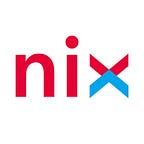The Future with Machine Learning and Quantum Computers
In the 1990s, a physics professor at Wichita State University, Elizabeth Behrman, was working towards combining quantum physics with artificial intelligence.
Back then, that was maverick science. She wanted to create neural networks. Even getting published was a challenge, with her work too radical for physics and neural-network journals.
Now, these concepts aren’t radical; they’re something startups, entrepreneurs and tech giants are working hard to make a reality. In the last two years, “IBM has almost single-handedly brought quantum computing out of academia and into the hands of anyone with access to the internet.”
IBM has developed a working prototype of a 50-quantum bit — or qubit — computer. Not only is this a huge leap forward for computing, but it represents the chance for machine learning to get faster and smarter, revolutionizing what it can do.
Earlier this century, quantum computing started to evolve from a physicist’s dream to an engineer’s reality. In 2016, IBM — world leaders in this field for over 50 years — connected a small quantum computer to the cloud using a toolkit called QISKit. It is possible for academics and school kids to run simple quantum algorithms using editable QISKit programs.
Google and other companies in this space are following the lead of IBM.
Some of the most relevant and practical applications that quantum computing could be used for in the near future include security, drug research, weather forecasts and traffic control. The UK Met Office has already invested in quantum computing to improve the accuracy of weather forecasts. Quantum encryption is impossible to break, making this method even more secure than the blockchain, and therefore, the next advancement in online security.
The three known types of quantum computing and their applications, generality and computational power. (Credit: Carl Torres for IBM Research)
NASA, custodians of vast quantities of data are already using D-Wave Systems quantum computing machines to research how to make the skies safer. Sharing that data with air traffic management companies, NASA is helping airlines plot routes that optimize the use of already crowded air space. Beyond the atmosphere, NASA is using these quantum machines to plan missions to send robots deeper into our solar system with a greater chance of success than modern super computers can manage.
Traditional computers — including our smartphones and tablets — can only process one of two states for each bit. To put it simply: something, whatever it is, whatever the challenge or input, is only viewed as a one or zero. However, that isn’t the case with quantum computers. IBM’s Q computer “will exploit the laws of quantum mechanics to evaluate 100 quadrillion states simultaneously.”
When we consider the huge potential and number of sectors quantum computing could be useful for, including security, transport, healthcare, defense and finance, it is easy to see why a Market Research Media report predicts the value of the sector will exceed $5 billion in 2020. Bringing machine learning and quantum computing together opens up even more possibilities, in every area of human life.
When playing with large datasets, tasks such as classification, regression and clustering, could take place at the same time. Not only would the algorithm learn and therefore evolve, but companies, governments and universities could generate enormous benefits from this enhanced computing power. Bringing quantum computing and AI together is the next logical step.
As a Wired article said, “Self-replicating AI, like Google’s AutoML, could — theoretically — scale with hardware advances to create algorithms far more complex than any human could, in order to harness the power of quantum computing.”
